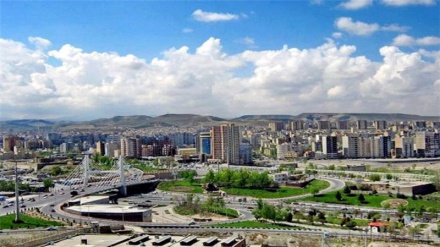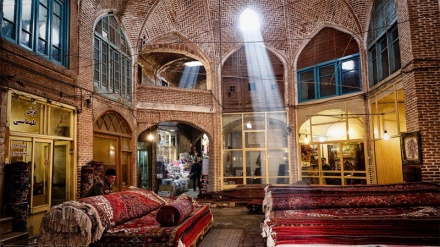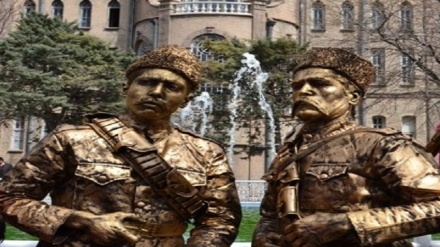Tabriz, 2018 (22)
Welcome to this week's episode of the series "Tabriz, 2018". One of the branches of Iranian art is handicrafts, which manifests itself differently in each region. Numerous artists, across the country, make every effort to actualize their potentials, and create magnificent works. Today, we become familiar with some of the braches of handicrafts in the city of Tabriz.
Iranian painting is a pictorial expression, which is unique to Iranians and distinguished from other cultures. In the meantime, Tabriz School Iranian Painting maintains an especial display; with the city of Tabriz named as the World of Islam's painting hub. Iranian painting has been grouped under the category of First Tabriz School Iranian Painting in the city of Tabriz as of the Ilkhanid era; with the book named "Shahnameh-e Shah Tahmasb" which was published in the Safavid era as one of the most prominent books remaining from 10th Century AH, considered as one of the famous works of this school.
Marginal illustration is one of the features of Tabriz School Iranian Painting. Cheerful elements of nature, glittering colors in life and clothing of individuals and nature are some of the features of Tabriz School Painting. Furthermore, the terms of manifestation of nature, tree trunks, sharp rocks, scattered plains, and moving clouds; precision in the paintings of plants and animal body limbs, in addition to further mobility in manifestation of sceneries, instead of tranquility and immobility in traditional Iranian paintings, are some of the other unique features of Tabriz School Painting.
The traditional art of stonecutting has long maintained an especial status in Iran, with countless artists leaving highly beautiful works of art within this domain, to this day. Nowadays, this form of art has partly lost its popularity. However, Tabrizi artists are still engaged in this branch of art, creating highly precious works in this arena. Stonecutting is in fact a type of engraving on stone.
Moreover, another branch of handicrafts which has grown in popularity in the city of Tabriz for a number of years is stonework. In this form of art, paintings are created on stone, with high precision and delicacy. These paintings, in addition to being beautiful, are highly durable, and have captured the attention of tourists who visit Tabriz.
Based on historical sources, the art of silvering has existed in Tabriz as of ancient times; reaching its peak within the Saljuqid and Mogul eras. Tabrizi artists have blended this art with decorating and bejeweling dishes, creating magnificent works.
This art continued to grow and develop in Tabriz within the Safavid era, and was promoted until the waning days of Qajarid era. Prior to this phase in time, the related silvering items were highly precious. However, upon the addition of other alloys, ordinary people also gained access to these items.
Some of the eye-catching items that capture the attention of tourists, are the traditional ornaments of this city, which maintain an especial status among people, displaying exemplary magnificence and delicacy. Given the presence of traditional and modern markets and sale of ornaments; other cities of East Azarbaijan Province have also tuned to production of ornaments.
Mosaic visual art form is an Iranian handicraft and an art which dates back to Saljuqid era. Tourists, upon observing this type of works are stunned by them. This craft is also popular in cities such as Herat, Yazd, Aran and Bigdel, Samarkand, and Kashan. Meanwhile, the designs and drawings of the mosaic art form are different in the city of Tabriz.
The leather of Tabriz is one of the most famous leather industry brands, which has always been highly popular. In Iran, the cities of Tabriz, Isfahan, Mashhad, and Tehran are the main producers of shoes. In the meantime, Tabriz is best known for production of high-quality leather shoes.
Tabriz has experienced development and growth in production of leather after the collapse of the Qajarid Dynasty. The first leather-producing factory in Tabriz dates back to ninety years ago.
In the 1980s, due to the growth of city of Tabriz, and pollution caused by these industries, the leather-producing factories were relocated to the outskirts of Tabriz. Based on the ratification of the Cabinet for establishment of a private industrial township; an industrial town for production of leather was established in Tabriz, which has turned into a leather-production pole in the country; maintaining an annual production capacity of 50 million square feet. Currently, 95% of the leather-producing units of this industrial town manufacture heavy leather.
MR/ME


